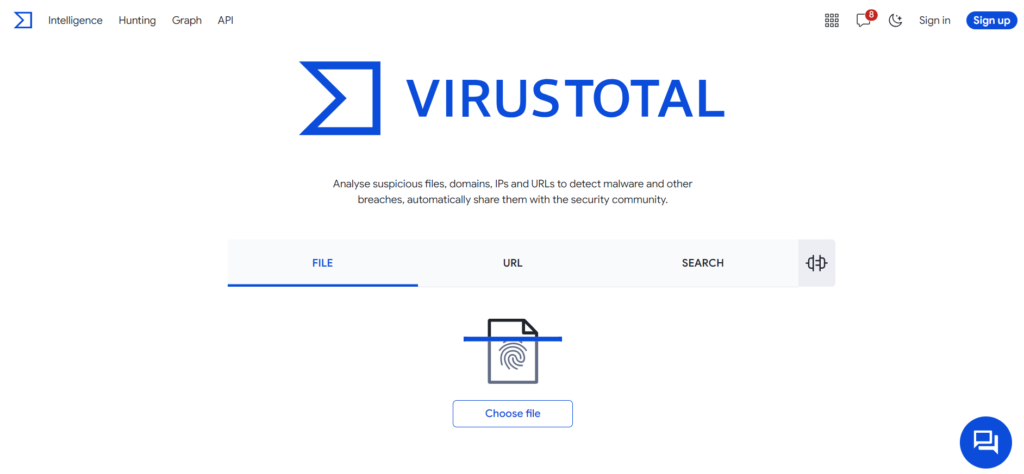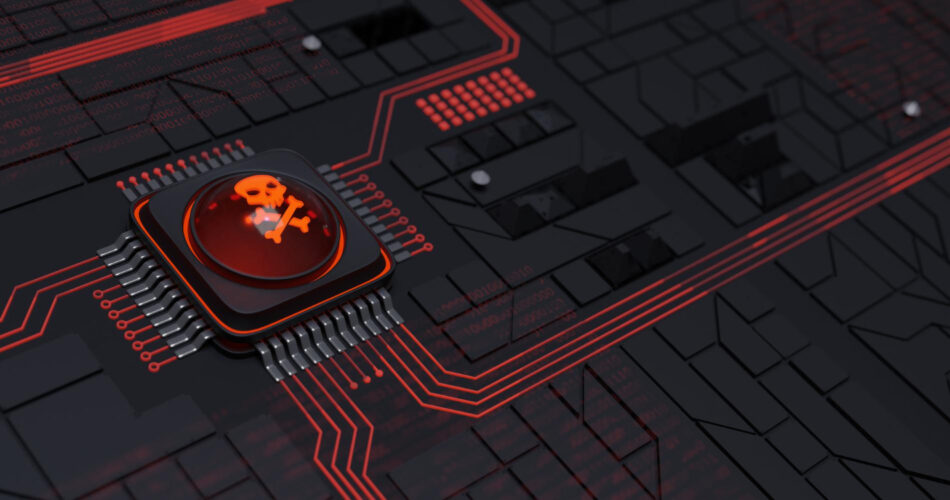In the digital age, where cryptocurrencies are reshaping the financial landscape, there’s a dark underbelly that many are unaware of: How to Detect Crypto Mining Malware? But what is it, and more importantly, how can you safeguard your devices against it? In this comprehensive guide, we’ll unravel the mystery of crypto mining malware and provide actionable steps on how to detect and prevent it.
Table of Contents
Understanding Crypto Mining Malware
Cryptocurrency, a digital or virtual form of currency that uses cryptography for security, has taken the world by storm. With the rise of cryptocurrencies like Bitcoin, Ethereum, and many others, there has been a parallel rise in malicious activities associated with them. One such activity is the deployment of crypto mining malware. But what exactly is it, and why is it a concern? Let’s delve deeper.
What is Crypto Mining?
Before understanding the malware, it’s essential to grasp the concept of crypto mining:
- Cryptocurrency Mining: This is the process by which new coins are introduced into the existing circulating supply. Miners use powerful computers to solve complex mathematical problems. Once solved, a new block is added to the blockchain, and the miner is rewarded with a certain amount of cryptocurrency.
The Birth of Crypto Mining Malware
Malicious Intent
Not everyone wants to invest in powerful computing machinery or pay the associated electricity bills. Some individuals, with malicious intent, seek to use other people’s computers for their mining operations without their knowledge or consent. This is where crypto mining malware comes into play.
Stealthy Operation
Unlike other forms of malware, crypto mining malware doesn’t steal data or corrupt systems. Instead, it operates stealthily in the background, using the computer’s processing power to mine cryptocurrency.
How Does It Work?
Infiltration
The malware can enter a system through various means – phishing emails, malicious advertisements, or infected websites.
Taking Control
Once inside, the malware takes control of the system’s central processing unit (CPU) or graphics processing unit (GPU), directing them to mine cryptocurrencies.
Sending Rewards
The mined cryptocurrency is then sent to the attacker’s wallet, all while the victim remains oblivious to the background activity draining their system’s resources.
Types of Crypto Mining Malware
There are several types of crypto mining malware, each with its unique characteristics:
Browser-Based
This type of malware embeds a script on a website. When a user visits the site, the script runs and uses the visitor’s computer resources to mine cryptocurrency.
File-Based
This malware resides in a file. Once the file is executed, the malware begins its mining operation.
Cloud-Based
Leveraging cloud resources, this malware mines cryptocurrency using the power of cloud infrastructures, leading to hefty bills for unsuspecting victims.
Signs Your Device May Be Infected
Unusual CPU Usage
One of the most telltale signs of cryptojacking or malware infection is a sudden and unexplained spike in CPU usage. Since crypto mining requires significant computational power, an infected device will often show high CPU usage even when not performing any intensive tasks.
How to Monitor
- Windows: Open the Task Manager (Ctrl+Shift+Esc) and check the “Performance” tab. A consistent high CPU usage, especially when the device is idle, is a red flag.
- Mac: Use the Activity Monitor (found in Utilities) and check the CPU tab for any unusual activity.
What to Look For
Look for unfamiliar processes or applications that are consuming a high percentage of the CPU. If you find any, it’s essential to investigate further.
Overheating Devices
Devices infected with crypto mining malware tend to overheat due to the continuous mining activity. Overheating not only affects the device’s performance but can also reduce its lifespan.
Physical Signs
The device becomes hot to touch, especially around the CPU area. For laptops, the base might become uncomfortably warm.
Potential Risks
Prolonged overheating can damage internal components, reduce battery life, and in extreme cases, can even cause the device to shut down to prevent hardware damage.
Slow Performance and Lag
As the malware utilizes the device’s resources for mining activities, the overall performance of the device can take a hit. This can manifest as slow response times, applications taking longer to open, and general sluggishness.
Symptoms
- Delays in executing commands.
- Frequent freezing or “Not Responding” messages.
- Difficulty in multitasking or running multiple applications simultaneously.
Impact on User Experience
Such performance issues can be frustrating, leading to decreased productivity and a subpar user experience.
Unexpected or Unwanted Pop-ups
While pop-ups can be a sign of adware rather than cryptojacking, they indicate that the device might be compromised. Malicious software often comes bundled with other unwanted software, leading to a range of symptoms.
Symptoms
- Frequent pop-up ads appearing outside of the browser.
- Browser redirects to unfamiliar or suspicious websites.
- New toolbars or extensions installed without user consent.
Potential Risks
Clicking on these pop-ups or redirects can lead to further malware infections or phishing attempts.
Unexplained Increase in Electricity Bills
Crypto mining is energy-intensive. If a device is infected and continuously mining, it will consume more power, leading to a noticeable increase in electricity bills.
- What to Look For: A sudden and unexplained increase in monthly electricity costs, especially if no other changes in power consumption habits have occurred.
Tools to Detect Crypto Mining Malware
The detection of crypto mining malware is crucial to safeguarding your device’s resources and ensuring your personal data remains uncompromised. Here’s a detailed look at the tools and methods available to detect such threats:
Antivirus Software

Modern antivirus solutions have evolved to detect a wide range of threats, including crypto mining malware. They use signature-based detection, behavioral analysis, and heuristics to identify suspicious activities.
Recommended Solutions:
- McAfee: Known for its comprehensive threat database and real-time scanning capabilities.
- Norton: Offers advanced protection features and a user-friendly interface.
- Bitdefender: Recognized for its high detection rates and minimal system impact.
Features to Look For
Real-time protection, frequent database updates, system performance optimization, and a dedicated anti-ransomware module.
Browser Extensions


Several browser extensions are designed specifically to detect and block crypto miners that operate through web scripts.
Recommended Extensions:
- MinerBlock: An open-source tool that uses two methods to block miners: it blocks requests/scripts loaded from a blacklist and detects potential mining behavior inside loaded scripts. Made for Google Chrome.
- No Coin: Provides a safe and reliable way to control how a website accesses your computational resources. Supports Google Chrome, Opera, Firefox.
Benefits:
These extensions are lightweight, easy to install, and can effectively block in-browser mining scripts, ensuring a smoother browsing experience.
Online Scanners

Online scanners allow users to check specific files, URLs, or system processes for potential threats, including cryptojacking scripts.
Recommended Platforms:
- VirusTotal: A free service that analyzes files and URLs for viruses, worms, trojans, and other kinds of malicious content. It uses multiple antivirus engines and website scanners to provide a comprehensive report.
- PublicWWW: This platform allows users to search the source code of websites. It can be used to find websites that use known cryptojacking scripts.
Usage Tips
Always ensure that sensitive information is not part of what you’re scanning. For instance, avoid uploading personal documents to online scanners.
Network Monitoring Tools

By monitoring network traffic, users can detect unusual outbound connections or data transfers, which might indicate crypto mining activity.
Recommended Tools:
- Wireshark: A widely-used network protocol analyzer that can capture and display the data traveling into and out of a computer.
- GlassWire: A network monitor & security tool with a built-in firewall. It visualizes your network activity in real-time and can detect unusual patterns.
Benefits
These tools provide insights into all network activities, making it easier to spot unauthorized connections or data transfers.
Steps to Remove Crypto Mining Malware
If you suspect your device has been compromised by crypto mining malware, it’s essential to act swiftly to remove the threat and prevent further damage.
Quarantine and Delete Suspicious Files
Before deletion, it’s essential to isolate suspicious files to prevent them from causing further harm or spreading to other files.
Steps:
- Use your antivirus software to scan your device.
- Once detected, select the option to quarantine the suspicious files.
- After quarantining, safely delete these files from your system.
Update and Run Antivirus Scans
Keeping your antivirus software updated ensures that it can detect and remove the latest threats.
Steps:
- Update your antivirus software to the latest version.
- Conduct a full system scan to identify and remove any crypto mining malware.
- Consider running scans with multiple security tools for a comprehensive sweep.
Clear Browser Cache and Cookies
Some crypto miners operate within the browser and store scripts in the cache or cookies.
Steps:
- Open your browser settings.
- Navigate to the privacy or history section.
- Select the option to clear browsing data, ensuring that cached images, files, and cookies are selected for deletion.
Reset Browser Settings
If the browser continues to exhibit signs of infection, resetting it to its default settings can help.
Steps:
- In your browser settings, find the option to reset or restore settings to their original defaults.
- Confirm the reset. Note: This will disable all extensions and clear temporary data.
- Manually reinstall necessary extensions, ensuring they are sourced from trusted providers.
Disconnect from the Internet
Temporarily disconnecting from the internet can prevent the malware from communicating with its server or downloading additional payloads.
Steps:
- Turn off your device’s Wi-Fi or unplug the Ethernet cable.
- Conduct offline scans and removal processes.
- Only reconnect once you’re confident the threat has been neutralized.
Check and Monitor CPU Usage
Continuous monitoring can help ensure the malware has been entirely removed and isn’t operating in the background.
Steps:
- Regularly check your device’s task manager or activity monitor.
- Look for unfamiliar processes consuming high CPU percentages.
- Investigate and terminate any suspicious or unknown processes.
Consider a System Restore
If the infection persists or if the system is behaving erratically, restoring it to a previous state might be a viable option.
Steps:
- Ensure you have backups of essential files.
- Use the system restore feature to revert your device to a state before the suspected infection date.
- Monitor the device closely after the restore to ensure the malware doesn’t return.
Prevention: How to Protect Your Device from Future Attacks

Prevention is always better than cure, especially when it comes to safeguarding your devices from malicious threats like crypto mining malware.
Regular Software Updates
Software developers frequently release updates to patch vulnerabilities that could be exploited by malware.
Steps:
- Enable automatic updates for your operating system.
- Regularly update all software, applications, and plugins.
- Prioritize security patches and updates flagged as critical.
Use Trusted Antivirus Solutions
A reliable antivirus program can detect, quarantine, and remove a wide range of threats, including crypto mining malware.
Recommendations:
- Opt for reputable antivirus solutions like McAfee, Norton, or Bitdefender.
- Ensure real-time protection is enabled.
- Schedule regular full system scans.
Enable Firewall
Firewalls act as a barrier between your device and potential threats from the internet, blocking unauthorized access.
Steps:
- Ensure your device’s built-in firewall is activated.
- Configure the firewall settings to suit your usage while maximizing protection.
- Consider investing in a dedicated firewall solution for enhanced security.
Avoid Suspicious Downloads and Links
Malware often infiltrates systems through malicious downloads or compromised links.
Tips:
- Only download software and files from trusted sources.
- Be wary of email attachments or links from unknown senders.
- Hover over links to view the actual URL before clicking.
Educate and Stay Informed
Awareness is a powerful tool. Staying updated on the latest threats and security best practices can significantly reduce the risk of infection.
Recommendations:
- Follow cybersecurity blogs or news platforms.
- Attend webinars or workshops on digital security.
- Join online forums or communities focused on cybersecurity.
Use Browser Extensions for Added Protection
Several browser extensions can detect and block cryptojacking scripts and other threats.
Recommendations:
- Install extensions like MinerBlock or No Coin for browser-based cryptojacking protection.
- Use ad-blockers to prevent malicious ads that might carry malware.
Backup Data Regularly
In the event of an infection, having recent backups ensures you can restore your system without significant data loss.
Steps:
- Use external hard drives, cloud storage, or dedicated backup services.
- Schedule automatic backups at regular intervals.
- Periodically verify backup integrity to ensure data can be restored when needed.
Use Strong, Unique Passwords
Weak or reused passwords can be exploited, giving attackers potential access to your devices or accounts.
Tips:
- Use a combination of letters, numbers, and symbols.
- Avoid using easily guessable information, like birthdays or names.
- Consider using a password manager to generate and store complex passwords.
Case Studies: Real-life Cryptojacking Incidents
The Academic Study on Cryptojacking
A comprehensive study titled “How You Get Shot in the Back: A Systematical Study about Cryptojacking in the Real World” was conducted by researchers from Fudan University and the University of California Riverside. This study delved deep into the world of cryptojacking, revealing its prevalence, infrastructure, and technical characteristics. The researchers developed a behavior-based detector called CMTracker to track Cryptocurrency Mining scripts and their related domains. Their findings were alarming:
- They discovered 2,770 unique cryptojacking samples from 853,936 popular web pages.
- Cryptojacking affects over 10 million web users every month.
- Attackers are estimated to earn over 59K US dollars daily from these activities.
- Many attackers frequently update their domains to evade detection.
- Evasion techniques include limiting CPU usage and obfuscating the code.
The Pirate Bay Incident
One of the most notable websites caught in the act of cryptojacking was The Pirate Bay, a popular torrent website. Users noticed significant CPU usage spikes when visiting the site. It was later revealed that the website was running a cryptocurrency mining script without the knowledge or consent of its users.
Rapid Growth of Cryptojacking
Comparing various reports, it’s evident that cryptojacking incidents are rapidly increasing. A report from AdGuard in November 2017 identified 220 cryptojacking websites from the Alexa top 100K list. By February 2018, a report from 360.cn found 241 such sites, a 10% increase. However, by April 2018, the CMTracker identified a whopping 868 sites from the top 100K, marking a 260% increase.
These case studies underscore the growing threat of cryptojacking. As the value of cryptocurrencies continues to rise, so does the allure for hackers to exploit unsuspecting users’ resources. It’s crucial for individuals and businesses to be aware of this threat and take necessary precautions.
Conclusion
As we’ve explored, malicious software programs operate covertly, siphoning off computational resources and electricity, often leaving victims unaware of the silent theft occurring right under their noses.
Understanding how to detect crypto mining malware becomes not just a matter of safeguarding one’s digital assets but also a crucial step in ensuring the smooth and optimal performance of our devices. From noticeable system lags to unexpected spikes in electricity bills, the signs can be subtle yet telling. Equipping oneself with the right knowledge and tools is the first line of defense against these clandestine operations.
But beyond the technicalities and preventive measures, there’s a broader narrative at play. The rise of crypto mining malware underscores the eternal dance between innovation and exploitation. As technology continues to advance, so do the tactics of those looking to misuse it. In this ever-evolving scenario, staying informed, vigilant, and proactive is our best bet.
In essence, the journey of understanding and combating crypto mining malware is emblematic of the broader challenges we face in the digital era. It’s a reminder that with great technological power comes great responsibility. As we stride forward, embracing the myriad possibilities of the future, let’s do so with an eye on security, ensuring that our digital footprints remain uncompromised and our devices, unburdened.
FAQs
What is the primary purpose of crypto mining malware?
To illicitly use a victim’s device resources to mine cryptocurrencies.
How can I check if a website is using my device for mining?
Use browser extensions like MinerBlock or online scanners like VirusTotal.
Is cryptojacking only limited to computers?
No, mobile devices and even servers can be targets.


